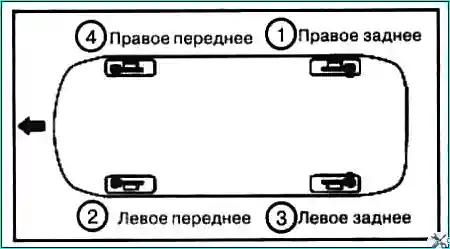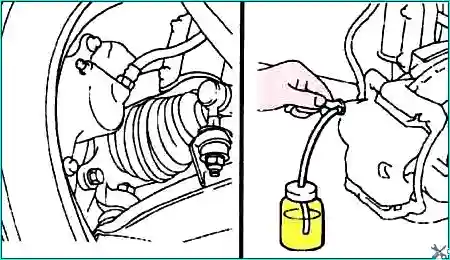The brake hydraulic drive is bled to remove air that got in when filling with fluid after replacing it or after repairing hydraulic drive units associated with its depressurization
Signs of air in the hydraulic drive:
- - increase in pedal travel, its "softness" when pressing the pedal once;
- - gradual decrease in pedal travel with a simultaneous increase in its "hardness" when pressing the pedal again.
Before bleeding the hydraulic drive, it is necessary to find and eliminate the cause of the depressurization.
Prepare the car to perform the task.
Place the car on a lift or inspection pit
Remove the cap from the master cylinder reservoir and fill it with brake fluid liquid
Please note that brake fluid dissolves paint, plastic and wire insulation, so if the liquid accidentally gets on the car parts, rinse them with water.

You need to remove air from the system in the following order:
- - rear right wheel;
- - front left wheel;
- - left rear wheel:
- - right front wheel.

Unscrew or remove the cap from the bleed nipple of the working brake cylinder and attach one end of the transparent hose to it
Insert the other end of the hose into a glass container of sufficient volume, half filled with brake fluid
Assistant slowly press the brake pedal several times
With the brake pedal pressed, use the key to loosen the bleed nipple and release air from the hydraulic systems.
Tighten the bleed nipple and the assistant releases the brake pedal
Repeat these operations until the brake fluid comes out without air bubbles
Tighten the bleed nipple. Tightening torque 7-13 Nm





